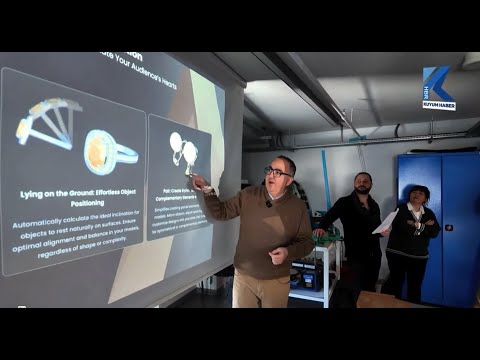Your Cart is Empty
Customer Testimonials
-
"Great customer service. The folks at Novedge were super helpful in navigating a somewhat complicated order including software upgrades and serial numbers in various stages of inactivity. They were friendly and helpful throughout the process.."
Ruben Ruckmark
"Quick & very helpful. We have been using Novedge for years and are very happy with their quick service when we need to make a purchase and excellent support resolving any issues."
Will Woodson
"Scott is the best. He reminds me about subscriptions dates, guides me in the correct direction for updates. He always responds promptly to me. He is literally the reason I continue to work with Novedge and will do so in the future."
Edward Mchugh
"Calvin Lok is “the man”. After my purchase of Sketchup 2021, he called me and provided step-by-step instructions to ease me through difficulties I was having with the setup of my new software."
Mike Borzage
V-Ray Tip: Optimizing Large-Scale 3D Projects with V-Ray Distributed Rendering Setup Guide
October 08, 2024 2 min read

In the realm of 3D rendering, achieving efficient and high-quality results is often a balancing act between time and resources. For large-scale projects, leveraging distributed rendering in V-Ray can be a game-changer. This feature allows you to utilize multiple computers to render a single image, significantly speeding up the process and enhancing productivity.
Here's a step-by-step guide to setting up V-Ray's Distributed Rendering for your large projects:
- Prepare Your Network: Ensure that all computers you intend to use are connected to the same network. This setup facilitates smooth communication between the render nodes and the master machine.
- Install V-Ray Spawners: Each machine participating in rendering must have the V-Ray Spawner installed and running. This program allows the machine to receive rendering tasks from the master computer. You can find the V-Ray Spawner executable in the V-Ray installation directory.
- Configure the Render Nodes: On each render node, start the V-Ray Spawner and verify that the firewall settings allow communication on the necessary ports. This is crucial to ensure that the node can communicate with the master machine without interruptions.
- Setup the Master Machine: On the computer you will be using to control the rendering process, open V-Ray and navigate to the render settings. Under the Settings tab, enable Distributed Rendering and add the IP addresses of the render nodes in the list. This setup allows the master machine to distribute rendering tasks effectively.
- Monitor the Rendering Process: Utilize V-Ray's logging and monitoring tools to ensure that all nodes are working efficiently. This can help in identifying any potential issues early in the rendering process.
- Fine-tune for Optimal Performance: Consider the complexity of your scenes and distribute tasks accordingly. Balancing the load based on each node's processing power can lead to better performance and faster results.
By implementing distributed rendering, you can significantly reduce render times and manage large projects with greater efficiency. This approach not only maximizes your hardware’s potential but also allows for more creativity and iterations in your design process.
For more insights and professional tips on utilizing V-Ray to its fullest potential, visit NOVEDGE, your trusted partner in digital creation tools.
You can find all the V-Ray products on the NOVEDGE web site at this page.
Also in Design News

💎 Rhino Artisan Arrives in Turkey: Revolutionizing Jewelry Design
February 27, 2025 1 min read
Read More
ZBrush Tip: Mastering Curve Surface for Unique Textures in ZBrush
February 27, 2025 2 min read
Read MoreSubscribe
Sign up to get the latest on sales, new releases and more …



